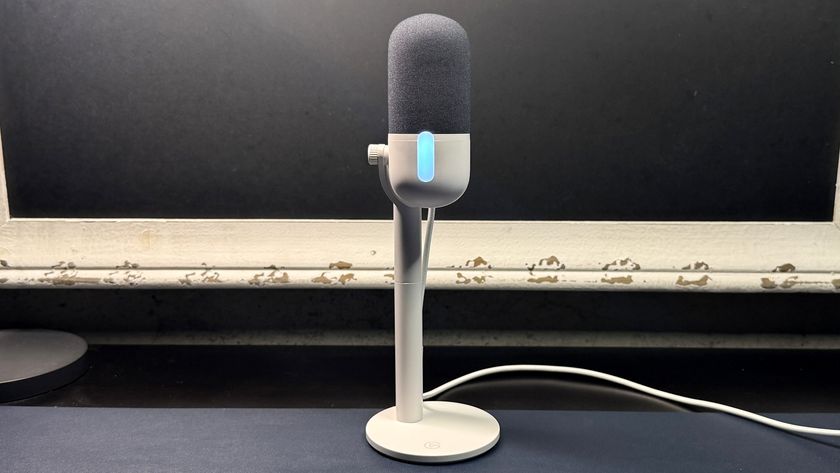FSP Dagger 600W SFX PSU Review
Why you can trust Tom's Hardware
Teardown & Component Analysis
Before proceeding with this page, we strongly encourage you to a look at our PSUs 101 article, which provides valuable information about PSUs and their operation, allowing you to better understand the components we're about to discuss. Our main tools for disassembling PSUs are a Thermaltronics soldering and rework station and a Hakko FR-300 desoldering gun. Finally, for the identification of tiny parts we use an Andonstar HDMI digital microscope.
| General Data | |
|---|---|
| Manufacturer (OEM) | FSP |
| Platform Model | - |
| Primary Side | |
| Transient Filter | 4x Y caps, 2x X caps, 2x CM & 1x DM chokes, 1x Diode |
| Inrush Protection | NTC Thermistor & Diode |
| Bridge Rectifier(s) | 1x GBU1506U (600V, 15A @ 100°C) |
| APFC MOSFETs | 2x STMicroelectronics STF24N60M2 (650V, 12A @ 100°C, 0.19Ω) |
| APFC Boost Diode | 1x CREE C3D06060 (600V, 6A @ 154°C) |
| Hold-up Cap | 1x Chemi-Con (450V, 330uF, 2000h @ 105°C, KMW) |
| APFC Disconnect IC | SEN013DG |
| Main Switchers | 2x Toshiba TK16A60W (600V, 15.8A @ 150°C, 0.16Ω) |
| Resonant Controller | Champion CM6901TX |
| Topology | Primary side: Half-Bridge & LLC Resonant Controller Secondary side: Synchronous Rectification & DC-DC converters |
| Secondary Side | |
| +12V MOSFETs | 3x Toshiba TPHR85 04PL (SOP Advance Series, 40V, 150A @ 25C, 0.85mΩ) |
| 5V & 3.3V | DC-DC Converters: 2x Ti CSD86350Q5D (25V, 40A) PWM Controller: 2x Anpec APWxxxx |
| Filtering Capacitors | Electrolytics: Nippon Chemi-Con (5-6,000 @ 105°C, KZH), Nichicon (105°C) Polymers: AiSHi (X-CON), CapXon |
| Supervisor IC | SITI PS223 (OVP, UVP, PG, OTP) & AS358N & AS393 |
| Fan Model | Power Logic PLA08010B12HH (80mm, 12V, 0.35A, Double Ball Bearing) |
| 5VSB Circuit | |
| Standby PWM Controller | Power Integrations TNY278PN |





Naturally, FSP's PCB is small given this unit's SFX form factor. The platform is modern, though. An LLC resonant converter and half-bridge topology are used on the primary side. On the secondary side, we find a synchronous rectification scheme for the +12V rail and a couple of DC-DC converters for generating the minor rails.
The PCB is frankly overloaded with components, so we expect that it receives mediocre airflow. That's probably why FSP decided not to implement a semi-passive fan mode. Trying to pull so much wattage from such a small board isn't easy, and we expect to find some performance compromises.






The first part of the transient filter includes two Y caps and a single X one, which uses a bleeding resistor for quick discharge once the power is removed. FSP should use a CM02X here, or a similar IC able to increase efficiency by blocking current that passes through the cap's discharge resistor when AC voltage is connected. The second part of the transient filter resides on the main PCB and on a smaller, vertical board. It includes two CM chokes and a single DM one, two Y caps, and one X cap. Instead of an MOV, it seems that a diode is used for transient protection.


The single bridge rectifier is a GBU1506U, which is bolted on a small heat sink.

A small NTC thermistor provides protection against large inrush currents. A bypass relay is used, allowing it to cool down quickly and, at the same time, slightly increase efficiency by isolating the thermistor after the PSU's start-up phase finishes.





The APFC converter uses two STMicroelectronics STF24N60M2 FETs and a single CREE C3D06060 boost diode. The bulk cap is provided by Chemi-Con and it belongs to the reliable KWM series. Its capacity is too low for a 600W unit, though. The PFC board is right beside the APFC's heat sink. Unfortunately, we couldn't identify the APFC controller since it is installed on the board's hidden side.



The primary switching FETs, two Toshiba TK16A60Ws, are configured in a half-bridge topology.


This is the resonant board. It hosts a Champion CM6901TX.

On the secondary side, the +12V rail is rectified by three Toshiba TPHR85 04PLs. They're cooled by the PSU's enclosure. Moreover, the FETs don't look like typical ones since they have eight pins, rather than the three we're used to.


The 5VSB circuit uses a Power Integrations TNY278PN IC. In order to increase this rail's efficiency and reduce vampire power, a SEN013DG IC disconnects the APFC circuit once the PSU is in standby mode.





Two VRMs handle the minor rails. Each of them uses a dedicated PWM controller along with a Ti CSD86350Q5D power block.

Below the connector on the right (shown in the photo above) is the protections IC, a SITI PS223. It supports OTP along with OCP for two +12V rails. Of course, the SDA600 only sports one +12V rail.





On the front of the modular board, a number of polymer caps filter the rails. Although polymer caps last much longer than electrolytic ones, we'd still prefer if FSP didn't use any CapXon products here.





The main PCB's soldering quality isn't the best we've seen from FSP, but it's also not bad.


The cooling fan, model number PLA08010B12HH, uses double ball-bearings, so it should last a long time. At full speed the fan is noisy. Fortunately, FSP's profile is fairly relaxed, so under normal conditions noise won't be a major issue.
MORE: Best Power Supplies
MORE: How We Test Power Supplies
MORE: All Power Supply Content
Current page: Teardown & Component Analysis
Prev Page Packaging, Contents, Exterior & Cabling Next Page Load Regulation, Hold-Up Time & Inrush CurrentStay On the Cutting Edge: Get the Tom's Hardware Newsletter
Get Tom's Hardware's best news and in-depth reviews, straight to your inbox.

Aris Mpitziopoulos is a contributing editor at Tom's Hardware, covering PSUs.

Xbox announces 'Copilot for Gaming' AI assistant — early access coming to Xbox mobile app, more details to come at GDC 2025

Nvidia teams up with Microsoft to put neural shading into DirectX, giving devs access to AI tensor cores

AMD RDNA 3 professional GPUs with 48GB can beat Nvidia 24GB cards in AI — putting the 'Large' in LLM
-
DarkSable I won't. FSP is a known OEM; arguably the second greatest on the market. The original Silverstone power supplies were made by FSP, while the new ones and Corsair's offerings are made by Great Well, which although doing a good job on Corsair's SFX psus, is not known for their reliability.Reply









